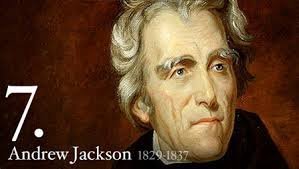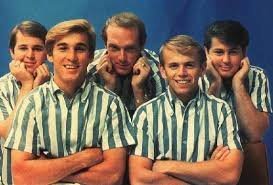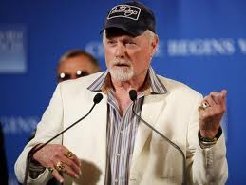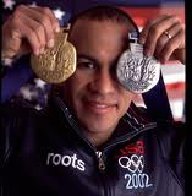Oregon is a state in the Pacific Northwest region of the United States. Oregon is a part of the Western United States, with the Columbia River delineating much of Oregon's northern boundary with Washington, while the Snake River delineates much of its eastern boundary with Idaho. The 42° north parallel delineates the southern boundary with California and Nevada. The western boundary is formed by the Pacific Ocean.
Oregon has been home to many indigenous nations for thousands of years. The first European traders, explorers, and settlers began exploring what is now Oregon's Pacific coast in the early to mid-16th century. As early as 1564, the Spanish began sending vessels northeast from the Philippines, riding the Kuroshio Current in a sweeping circular route across the northern part of the Pacific. In 1592, Juan de Fuca undertook detailed mapping and studies of ocean currents in the Pacific Northwest, including the Oregon coast as well as the strait now bearing his name. The Lewis and Clark Expedition traversed Oregon in the early 1800s, and the first permanent European settlements in Oregon were established by fur trappers and traders. In 1843, an autonomous government was formed in the Oregon Country, and the Oregon Territory was created in 1848. Oregon became the 33rd state of the U.S. on February 14, 1859.
Today, with 4.2 million people over 98,000 square miles, Oregon is the ninth largest and 27th most populous U.S. state. The capital, Salem, is the third-most populous city in Oregon, with 175,535 residents. Portland, with 652,503, ranks as the 26th among U.S. cities. The Portland metropolitan area, which includes neighboring counties in Washington, is the 25th largest metro area in the nation, with a population of 2,512,859. Oregon is also one of the most geographically diverse states in the U.S., marked by volcanoes, abundant bodies of water, dense evergreen and mixed forests, as well as high deserts and semi-arid shrublands. At 11,249 feet Mount Hood is the state's highest point. Oregon's only national park, Crater Lake National Park, comprises the caldera surrounding Crater Lake, the deepest lake in the United States. The state is also home to the single largest organism in the world, Armillaria ostoyae, a fungus that runs beneath 2,200 acres of the Malheur National Forest.
Oregon's economy has historically been powered by various forms of agriculture, fishing, logging, and hydroelectric power. Oregon is the top lumber producer of the contiguous United States, with the lumber industry dominating the state's economy during the 20th century. Technology is another one of Oregon's major economic forces, beginning in the 1970s with the establishment of the Silicon Forest and the expansion of Tektronix and Intel. Sportswear company Nike, Inc., headquartered in Beaverton, is the state's largest public corporation with an annual revenue of $46.7 billion.
The origin of the state's name is uncertain. The earliest geographical designation "orejón" (meaning "big ear") comes from the Spanish historical chronicle Relación de la Alta y Baja California (1598), written by Rodrigo Montezuma of New Spain; here it refers to the region of the Columbia River as it was encountered by the first Spanish scouts. The "j" in the Spanish phrase "El Orejón" was eventually corrupted into a "g".
Another possible source is the Spanish word oregano, which refers to a plant that grows in the southern part of the region.
Statehood
Slavery played a major part in Oregon's history and even influenced its path to statehood. The territory's request for statehood was delayed several times, as members of Congress argued among themselves whether the territory should be admitted as a "free" or "slave" state. Eventually politicians from the South agreed to allow Oregon to enter as a "free" state, in exchange for opening slavery to the southwest United States.
Oregon was admitted to the Union on February 14, 1859, though no one in Oregon knew it until March 15. Founded as a refuge from disputes over slavery, Oregon had a "whites only" clause in its original state Constitution. At the outbreak of the American Civil War, regular U.S. troops were withdrawn and sent east to aid the Union. Volunteer cavalry recruited in California were sent north to Oregon to keep peace and protect the populace. The First Oregon Cavalry served until June 1865.
Gasoline pump law
Self service gasoline was banned in Oregon from 1951 until August 2023. Although self-serve is now allowed in Oregon, gas stations are not required to offer it and many currently do not.
New Jersey is the only state remaining where self serve gas stations are not allowed.
Most of Oregon has a generally mild climate, though there is significant variation given the variety of landscapes across the state. The state's western region (west of the Cascade Range) has an oceanic climate, populated by dense evergreen mixed forests. Western Oregon's climate is heavily influenced by the Pacific Ocean; the western third of Oregon is very wet in the winter, moderately to very wet during the spring and fall, and dry during the summer. The relative humidity of Western Oregon is high except during summer days, which are semi-dry to semi-humid; Eastern Oregon typically sees low humidity year-round.
The state's southwestern portion, particularly the Rogue Valley, has a Mediterranean climate with drier and sunnier winters and hotter summers, similar to Northern California.
If you want to read a whole lot more, go here: https://en.wikipedia.org/wiki/Oregon
- SERVES
- 4
- COOK TIME
- 6 Min
You won't believe how easy it is to whip up this fancy-looking and fancy-tasting dinner recipe. Our Baked Overstuffed Shrimp recipe is a great way to treat yourself to a restaurant-style meal without spending hours in the kitchen!
- 1/2 pound imitation crabmeat, flaked
- 1/2 cup Italian-flavored bread crumbs
- 1 celery stalk, finely chopped
- 3 tablespoons mayonnaise
- 1 teaspoon Worcestershire sauce
- 1 teaspoon lemon juice
- 1/2 teaspoon onion powder
- 1/2 teaspoon black pepper
- 1 pound jumbo raw shrimp, peeled (size 16 to 20)
- 2 tablespoons butter, melted
- Paprika for sprinkling
- Preheat oven to 375º. Coat a baking sheet with cooking spray.
- In a medium bowl, combine crabmeat, bread crumbs, celery, mayonnaise, Worcestershire sauce, lemon juice, onion powder, and pepper; mix well.
- Butterfly shrimp by cutting lengthwise along inside curve, almost completely through. Split open shrimp and devein.
- Mound a heaping tablespoon of crabmeat mixture onto each shrimp, pressing down gently. Place on baking sheet. Drizzle with butter and sprinkle with paprika.
- Bake 6 to 8 minutes, or until shrimp turn pink. Serve immediately.
***We love "stuffed" recipes like these, 'cause it's like getting to enjoy two meals in one.
On March 15th, National Kansas Day recognizes The Sunflower State. Magnificent herds of bison, elk, mule deer, and antelope roamed the vast open plains populated by Cherokee, Osage, Pawnee, and many other tribes. The region became a part of the United States with the Louisiana Purchase in 1803.
Generations of travelers came to Kansas as the country expanded. From the Corps of Discover in 1804 to the Pony Express, all the roads in Kansas seemed to point westward.
Railroads brought rapid settlement to the territory and with it the divisive decision for citizens regarding statehood. Would Kansas be free or slave? The debates turned so vicious, the territory earned the name “Bleeding Kansas” before entering the union on January 29, 1861, as the 34th state and free.
With the railroads, ranching, livestock, and agriculture grew. The verdant, fertile soil of the Kansas farmland made the state the Breadbasket of the World.
Frank L. Baum even depicted farm life for one young girl named Dorothy in his books about a place called Oz. The Wonderful Wizard of Oz took the world by storm, especially when Hollywood put Judy Garland, Ray Bolger, Jack Haley, Bert Lahr, Frank Morgan, Margaret Hamilton, and Billie Burke in the cast. There was indeed no place like home, no place like Kansas.
One of the most critical decisions in Civil Rights history took place in Topeka, Kansas. The appeal of Brown vs. the Board of Education was brought before the Supreme Court of the United States in 1954. What had started with groups of parents and teachers in all-black schools in communities across the country had finally culminated in a final decision. Separate but equal violated the Fourteenth Amendment to the United States Constitution.












